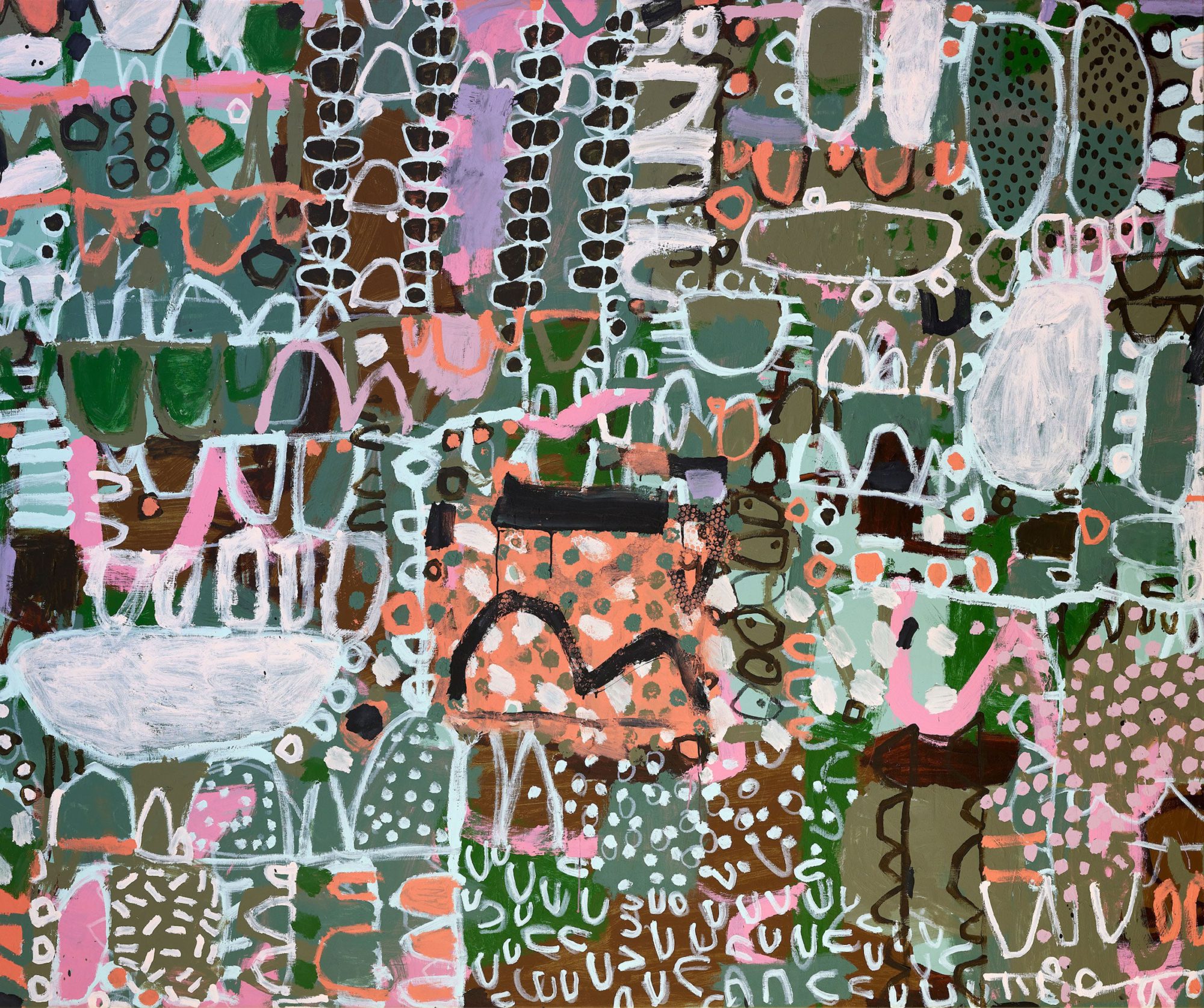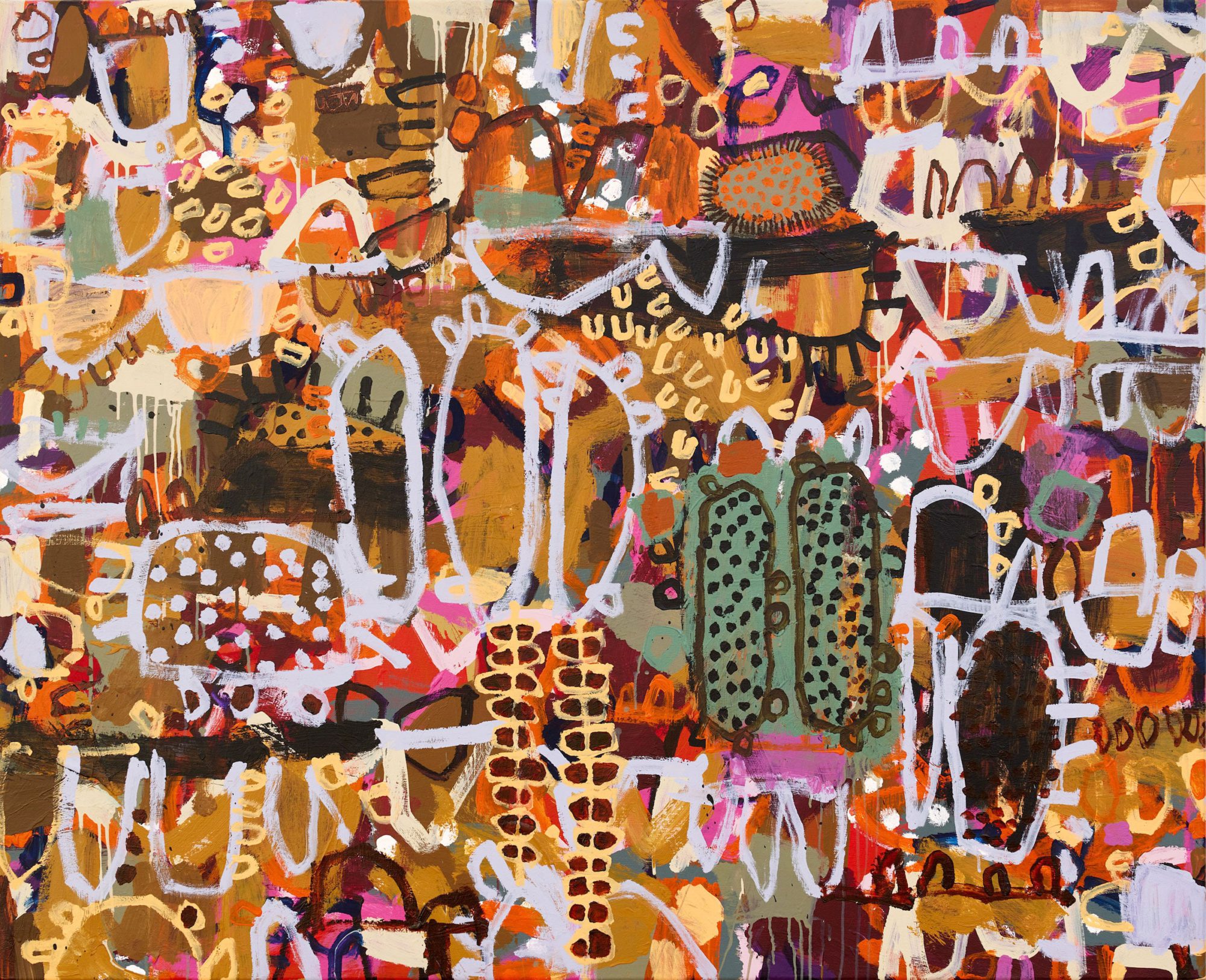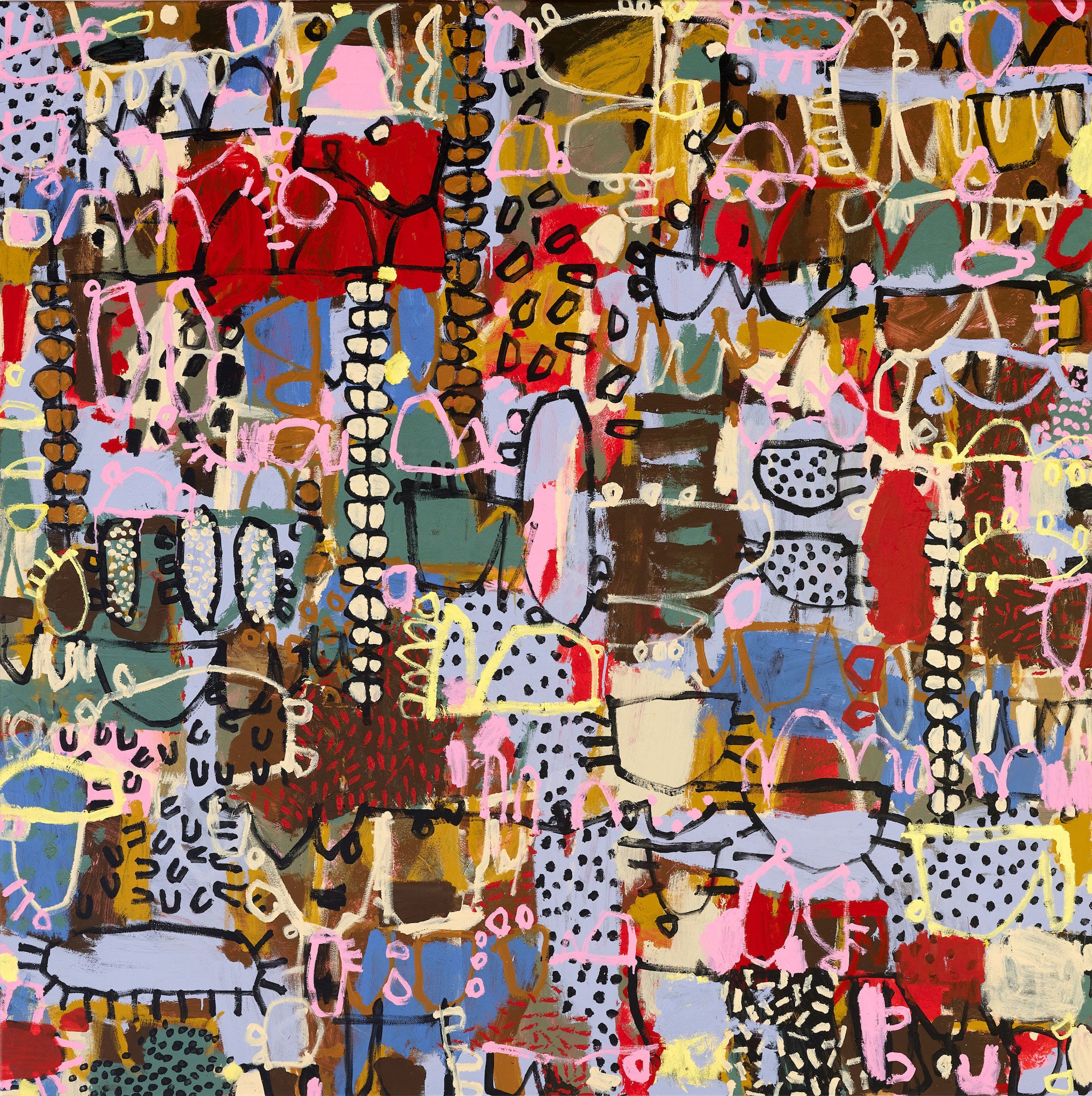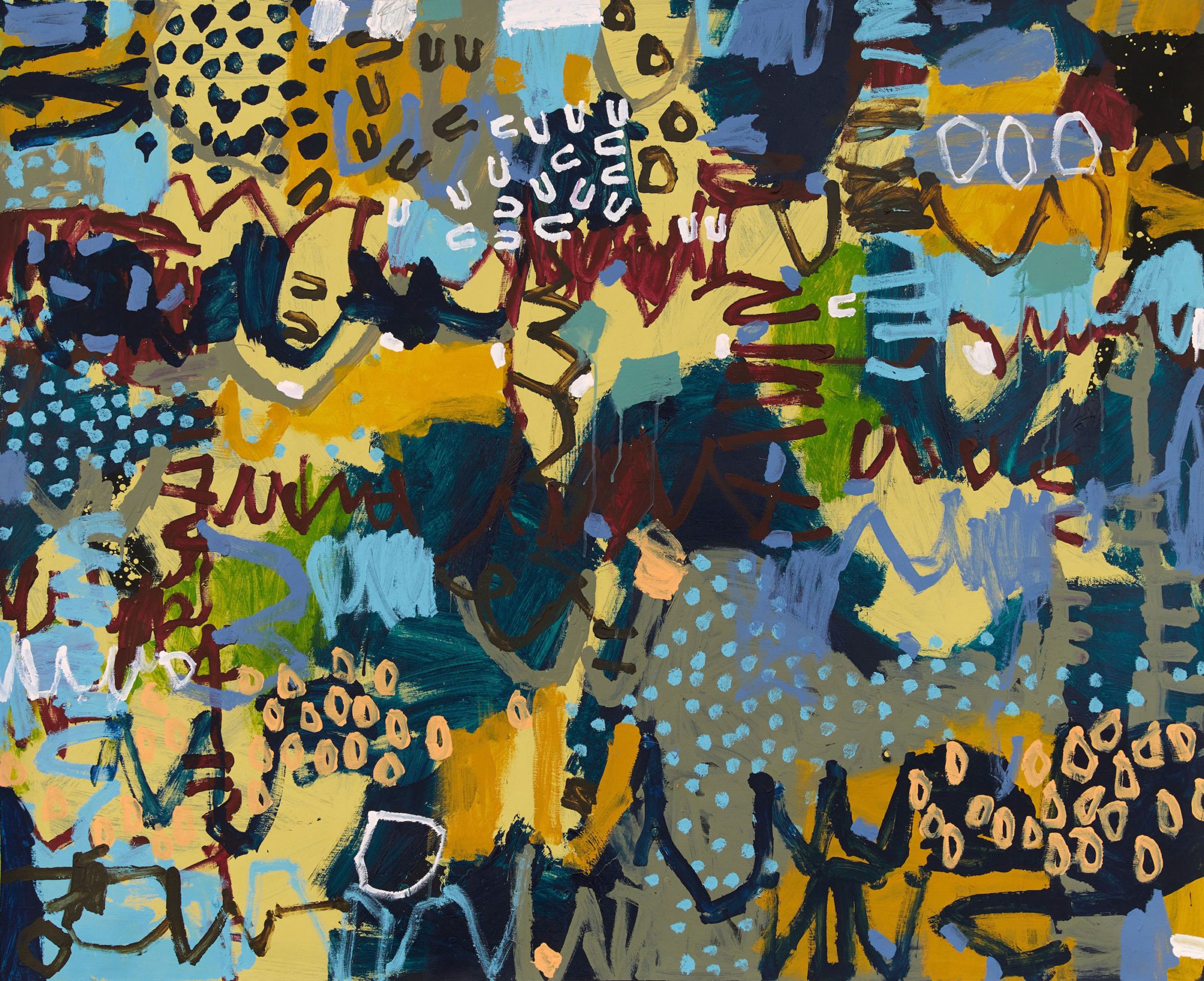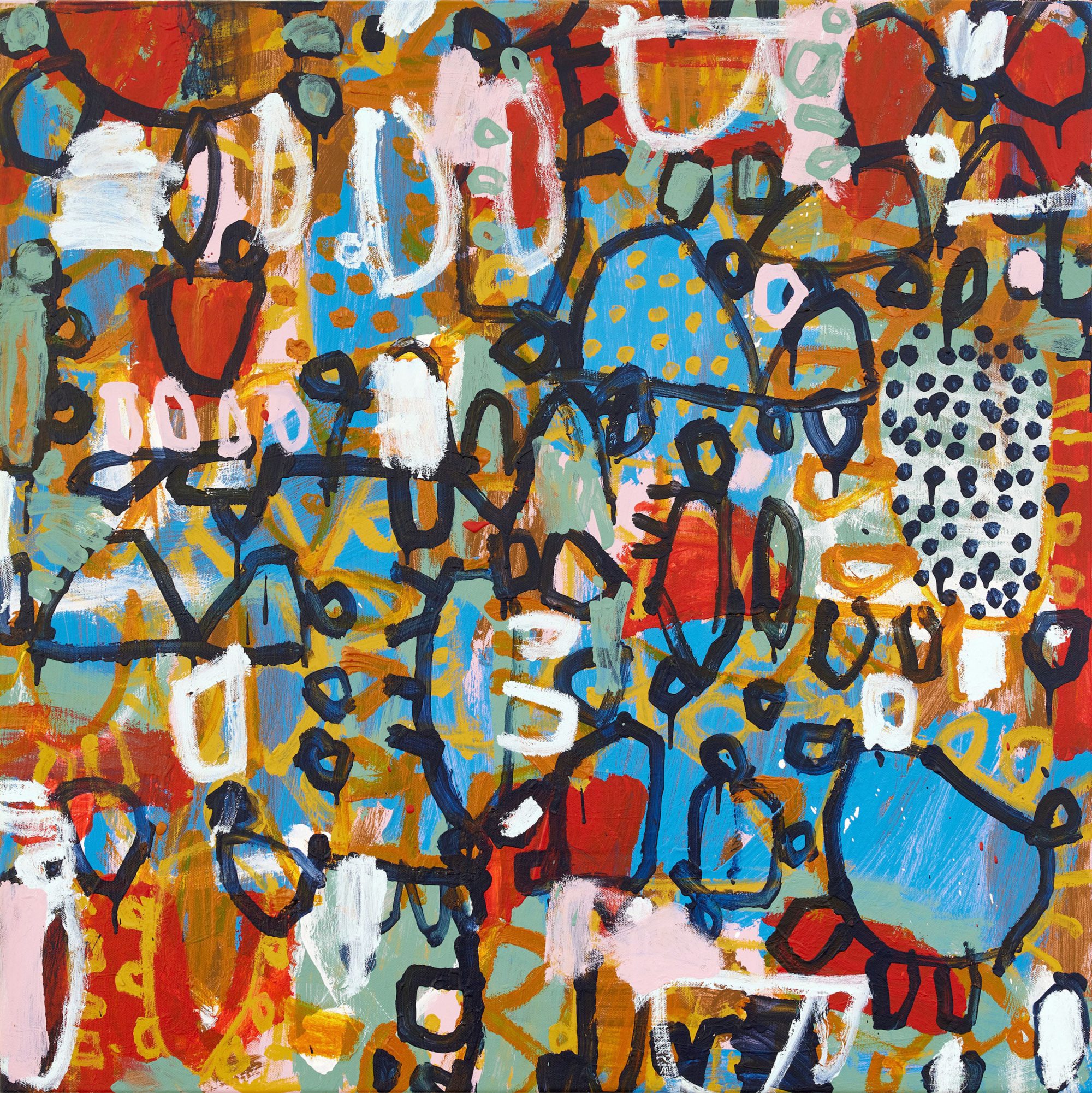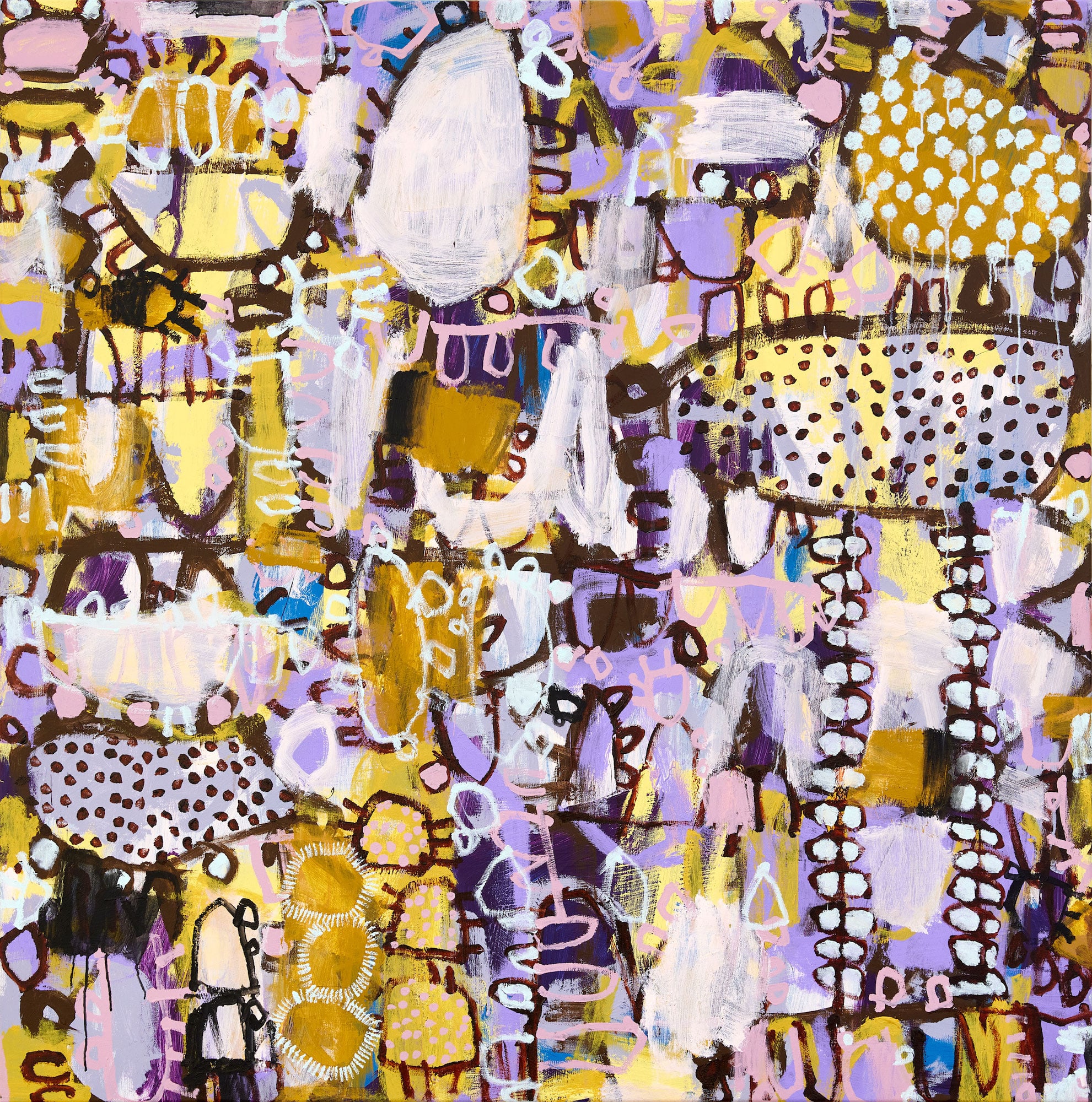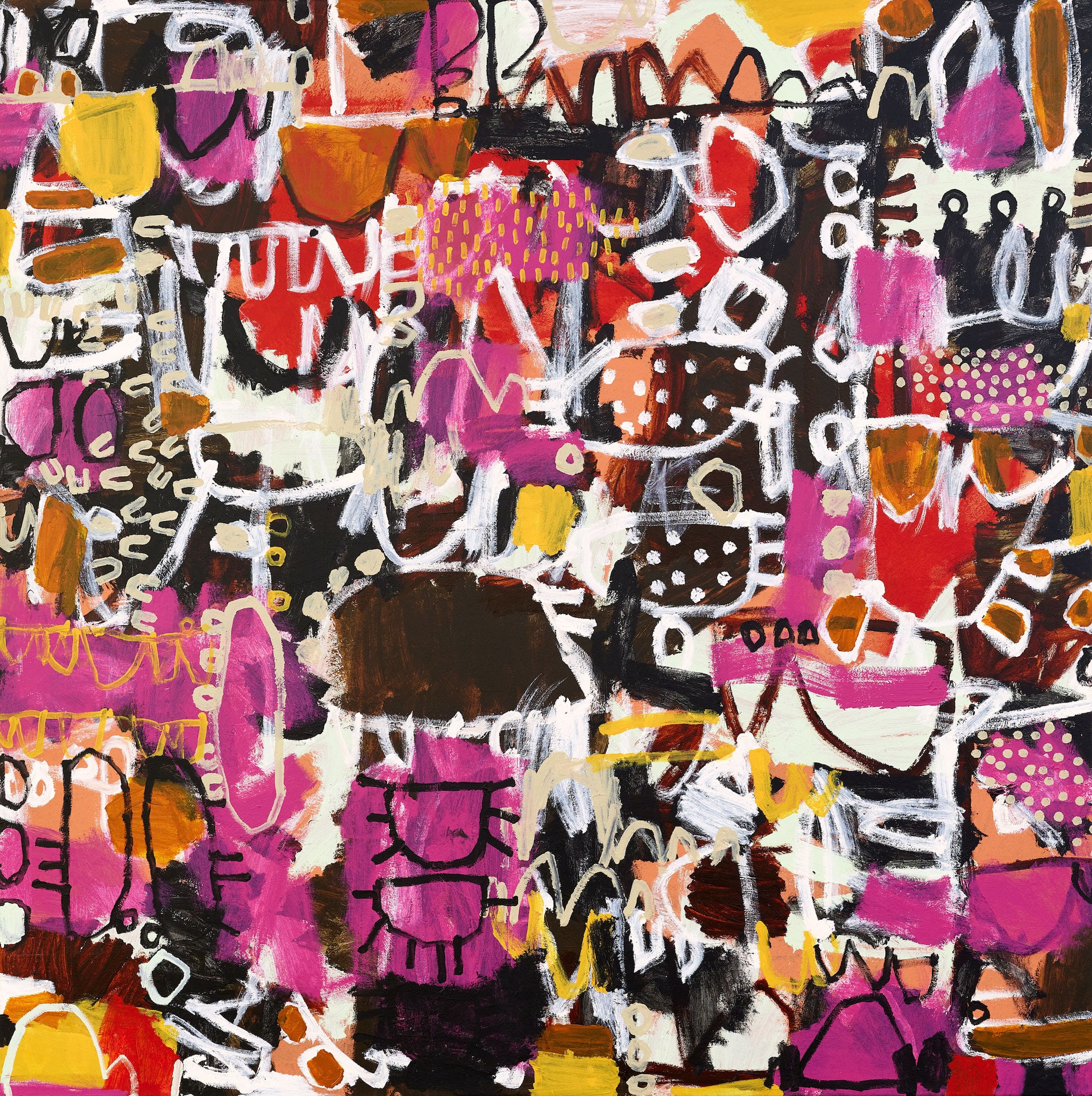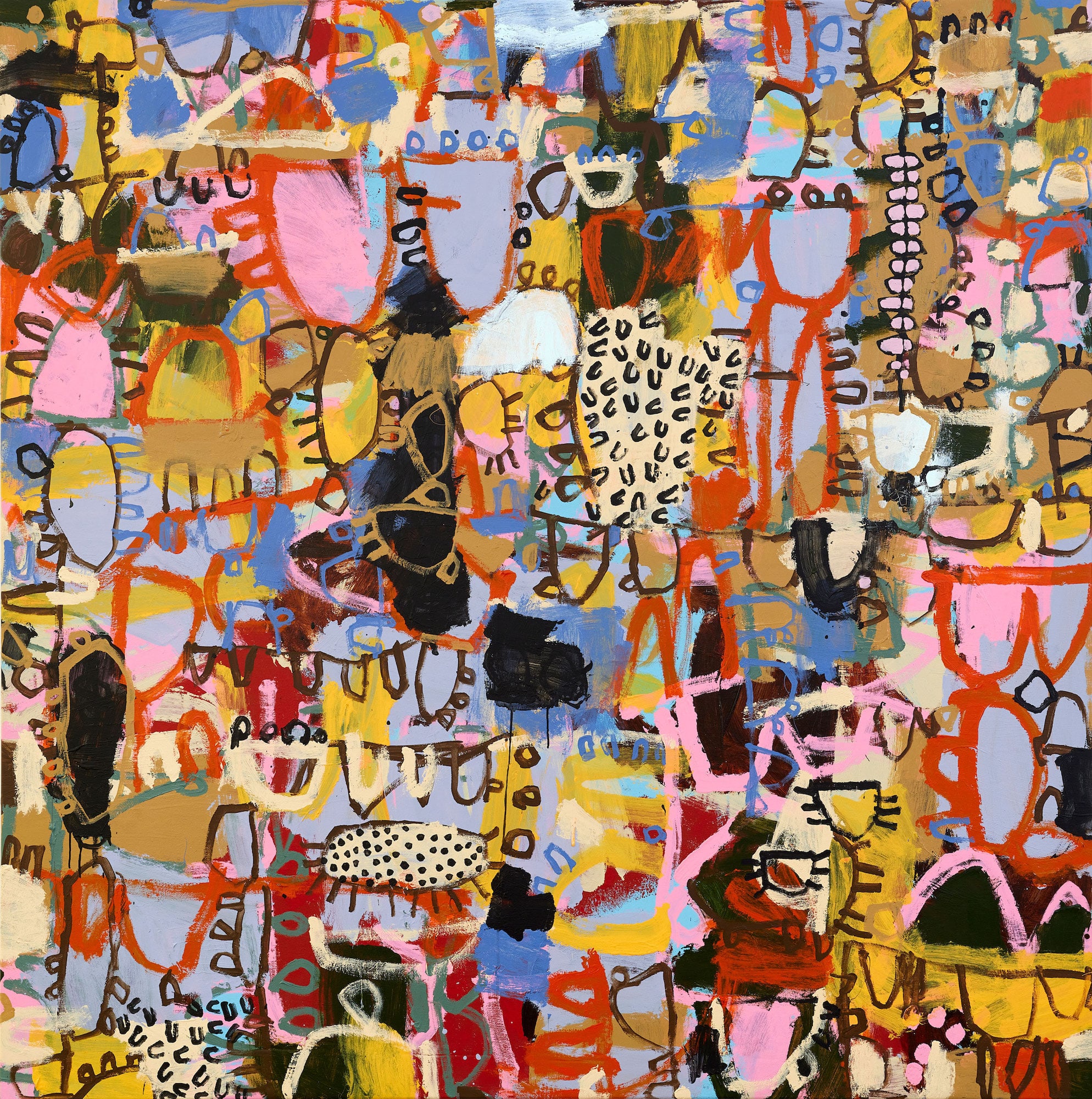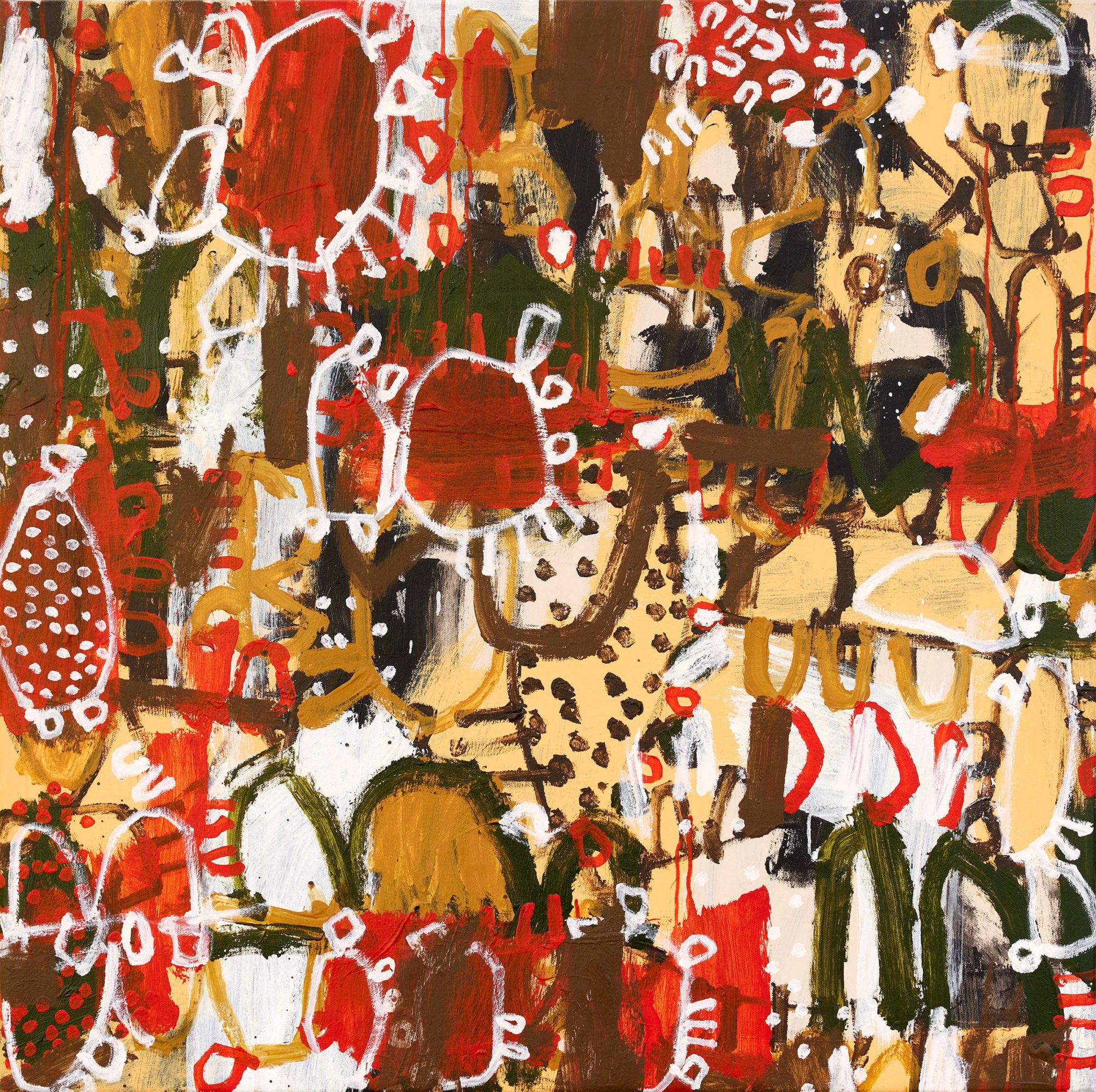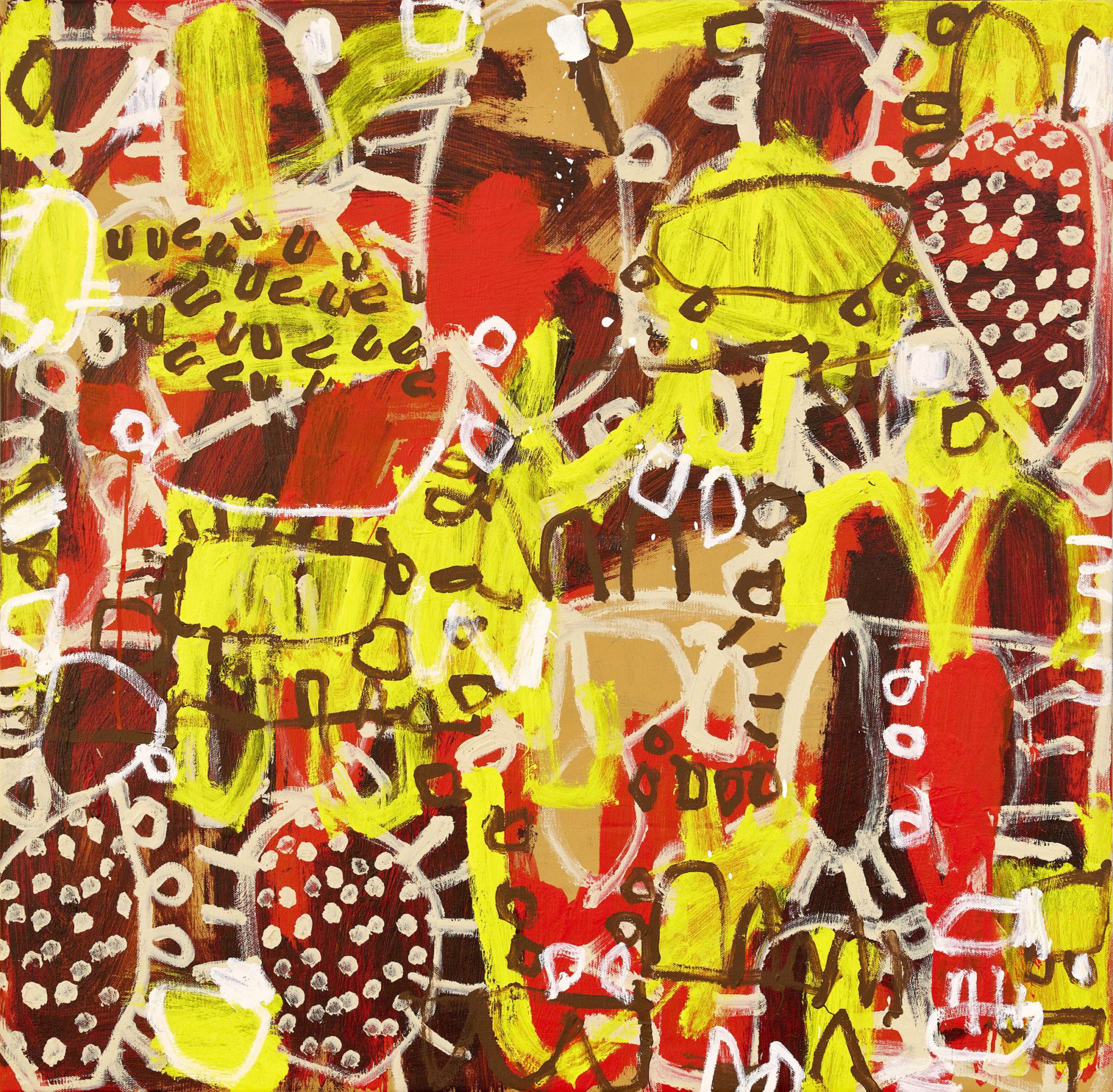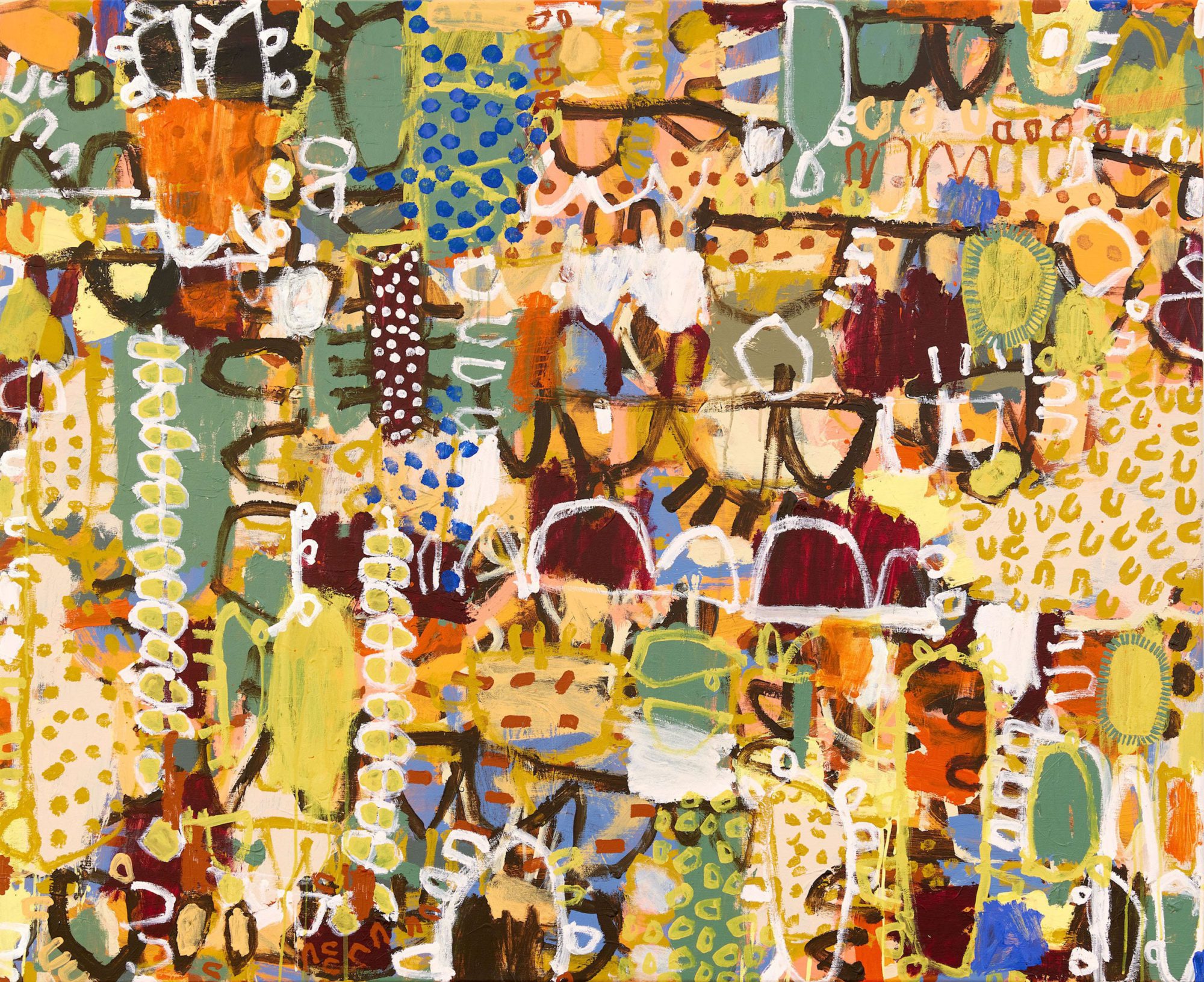
Naomi Hobson — Payamu — To Shine — Exhibition Essay
‘Most of the time I paint what I feel and what I see. My life experiences also help me to create. Every day is different light, another hue. As the seasons change, the landscape evolves; it blooms and burns and sprouts and falls – it’s never stationary.’
When my mother Naomi Hobson was born, my great grandfather gave her the name Yikan. In Kaantju language, Yikan means ‘hoop pine’ and is known to grow in abundance on Hobson’s mother’s Country of Ngallabidgi on the McIlwraith Ranges. For Kaantju people, it is our close affiliation with our Country, our kin and our art that keeps our puuya (spirit) strong.
Naomi Hobson is a multidisciplinary artist of Kaantju and Umpila descent. Born in 1978 in Far North Queensland, Hobson spent much of her formative years on Country with her grandparents. The bush is her refuge and is the place she feels most connected. Through her art she captures the places and stories that surround her community of Coen.
Situated in the heart of Cape York Peninsula, Coen is a township of around 350 people. The town was established as a gold mine in 1876, and soon became the centre for the fledgling Cape York Peninsula gold fields. Notable among the colonial history of the region was the introduction of police reserves, controlled areas which were stationed in Coen and along the Telegraph Route to ‘protect’ what was seen as a valuable communication asset. In reality, however, it rounded up Indigenous people within the reserve to manage and control their movement. The coming of the pastoral industry in these frontier times further curtailed the free movement of the Indigenous People and concentrated them on cattle stations within the strict confines of their immediate traditional lands, restricting travel between the outstations and Coen.
“When I think of Coen, I think of my old people, who despite enormous hardship, they survived and have passed on to us a future full of opportunity”.
Hobson’s pula (father’s father) was a founding member of the Cape York Land Council and was a leading voice for Cape York Pama. Our old people saw the challenges that their children faced as a result of colonisation and fought to establish self-determination that would help their people in the future.
Carrying the language of her Ancestors through her art, Hobson is forging her own path as a cultural leader and activist for her people in Cape York. Through her practice, she continues to push boundaries, tapping into a variety of art mediums and aesthetics. As a skilled painter, ceramicist and photographer, Hobson uses the language of art as a tool to discuss broader social and societal issues within her community. She is a master of her craft and, with each medium she undertakes, provides a poignant and carefully considered narrative that invites viewers into her lived reality. She is currently working with young people from her community, photographing their everyday lived experiences in hope to instill a sense of pride and acceptance.
This exhibition of works, titled Payamu, symbolises radiance and the shining of light. The body of work connects Hobson’s stories between the water and the sky, like a journey across Country. It is an adventurous exploration into colour, composition and mark-making techniques. Through balanced composition and heavily rendered markings, Hobson flaunts her technical capabilities as a painter, translating stories and places from her Country directly onto canvas.
Each painting is layered with meaning and stories from Country and places from her youth. Utilising a vivacious colour palette, Hobson’s work showcases a rhythmic beauty and movement that traverses the surface of the canvas. Among the most important aspects of her work is her understanding of the emotional response between the landscape and the canvas. Hobson uses colour and line to convey how she is feeling, and to provide audiences with a strong emotional response to her work.
‘I can’t help but to feel everything around me. As an artist for me, my feelings are channelled through my practice. Over the last few days I have been feeling the colour red… visually it’s not my favourite colour maybe because it’s so challenging to work with, however in me it has always been a colour of strength and being grounded, and I can’t help but to feel my people right now. The way I am dealing with everything is through my marks I am making. I feel red is revealing itself in a way to me that signifies coming together and being strong as one people we are powerful.’
Deeper was created at the height of the Black Lives Matter protests in America and around the world. For Hobson, channelling her emotions through her art has always been a powerful form of healing. As she explains, the work began with strong red markings slashed across the surface of the blank white canvas. Red being her response to pain and to trauma as a result of police brutality. Gradually, as if mending a wound, Hobson added layers and layers of different hues. The soft pastel blues were used to bring calm and peace to the work. Hobson says that blue reminds her of her saltwater Country and her connection to the saltwater has always been a source of refuge and strength. Connecting with her Ancestors on a deeper level, Hobson’s response to colour is spiritual and is a way of honouring her Ancestors through her art.
‘I explore painting as a connection to my Country. As my painting evolves, I am always thinking about my Ancestors. I can’t help but to feel them in my colours, they are my marks on the canvas.’
Hobson’s strong emotional response to colour, and her ability to capture her feelings in bold expressive markings is exciting. She invites the viewer into her reality, and with each application of paint, unveils her personal journey to healing. For Hobson, her Country has always been the primary source of inspiration in her work. She looks for the intimate and often unnoticed details of the land– the changing colours of the leaves during the passing of the dry season and the shimmering of light across the surface of the water’s edge. All of these subtle changes are manifested into an idea that Hobson translates directly onto canvas in a beautiful and eloquent way. She is always pushing the boundaries and searching for new ideas and signs from Country.
‘Perspective through my work, I’m always looking for movement, as my environment and landscape is ever changing and never still.’
Hobson is a contemporary artist of daring flair and virtuosity, who is constantly pushing the boundaries of her creative practice. Her paintings are a rich visual documentation of her Ancestral Country and the stories and places associated with it. Payamu is an ambitious body of work that flaunts Hobson’s adventurous painting techniques. When we see her work, we are immediately reminded of the lyrical beautify of Cape York Peninsula and its spectacular terrains.
Shonae Hobson, Kaantju, First Nations Curator Bendigo Art Gallery





